Kernen Construction Co. at 2350 Glendale Drive between Blue Lake and Fieldbrook. Photo: Jacquelyn Opalach
An environmental dispute between a Glendale construction company and its residential neighbors is driving a woman out of her home.
Located off the 299 between Fieldbrook and Blue Lake, Kernen Construction Co. offers excavating, paving, concrete, asphalt, metal fabrication and other services. From the company’s 37-acre site at 2350 Glendale Drive, employees crush, mix, transport and pile rock aggregate materials into small mountains – an understandably loud business activity – for 11 hours on weekdays and 10 hours on Saturdays.
Although Glendale has “traditionally been an industrial site,” as Humboldt County’s Planning and Building Department Director John Ford put it, the various industrial businesses along Glendale Drive are surrounded by homes. Flanked by marshy agricultural land and hilly redwood forest, residents like Glendale for its countryside feel.
Alas. “Any time you have residences and industrial uses, you’re going to have conflicts,” Ford said of the neighborhood. Even so, longtime community members say they lived in harmony with Kernen Construction – founded in 1986 – for decades. But just over a year ago, they say, living next to the company became unbearable literally overnight.
A KIEM-TV segment from 2009 highlighting Kernen Construction’s construction waste recycling program. In 2004, the company was awarded for its waste reduction effort by the Humboldt County Division of Environmental Health. Kernen Construction celebrates the accomplishment on its website’s homepage to this day.
Boiled down, the residents have two concerns: the noise and the environment. Accused by its neighbors of flouting environmental protection laws and disregarding the operational conditions of its permit, Kernen Construction has attracted the scrutiny of the state water board, the county planning and building department and a lawyered-up environmental nonprofit. They’re doing what they can to investigate accusations against the company, but for Owens and her neighbors, change isn’t coming fast enough.
Kernen Construction founders Scott Farley and Kurt Kernen didn’t respond to interview requests for this story.
Lynne Owens and her boyfriend, Bill Gilmer, are in their 60s and intended to spend their golden years in Glendale. But after struggling to restore peace to her backyard for more than a year, she’s moved into her van part time.
“I don’t live in the country,” Owens said. “I live in hell.”
A Noisy Neighbor
“I love my little house,” Owens said while showing the Outpost around one recent afternoon, two little hypoallergenic rescue dogs in tow.
Owens, a former traveling rock and blues musician, has lived on Glendale Drive for 10 years. Her 115-year-old house was in ruin when she bought it, and Owens used her life savings to turn the place into a charming farmhouse with fruit trees outside and a pool in the backyard.
Owens and Gilmer don’t spend much time outside, though, because of the noise and dust originating from their neighbor to the north. Separated by Noisy Creek, Kernen Construction borders the couple’s property on two sides.
Lynne Owens with her dogs at her house in Glendale. Photo: Jacquelyn Opalach
Owens invited three members of the Glendale Concerned Citizens Group to our interview. The group is an unofficial assembly of 15 or so neighbors who originally gathered to plan restoration projects for Hall Creek and Noisy Creek, two tributaries of the Mad River that border Kernen Construction. We sat around Owens’ dining room table, windows shut and classical music playing to drown out the construction outside.
“We’ve lived in harmony – semi-harmony – for 20 years,” said Dave Trobitz, a lifelong Glendale resident. “And this stuff just started last summer.”
According to the neighbors, Kernen Construction began working around the clock for days on end in June 2023. Owens said that around that time, the company started using the workyard nearest her home more heavily than ever before.
“There’s absolutely no way you could sleep,” Owens said. “Absolutely no way.”
It was an overt violation of the company’s conditional use permit (CUP). Issued and enforced by the Humboldt County Planning and Building Department, the CUP spells out site regulations and operational restrictions, like sound limits and what hours the company may operate (in Kernen Construction’s case, that’s 7 a.m. to 6 p.m. on weekdays and 7 a.m. to 5 p.m. on Saturdays, according to the CUP). Kernen Construction’s CUP was issued in 2001. Neighbors believe it’s poorly written and too easy to break.
When Kernen Construction started working at night in June 2023, some neighbors tried approaching Scott Farley, who manages the company.
“First of all when Kernen Construction was a bad actor, I would call and I would say: ‘Hey, you know, be a good neighbor. Be a good neighbor,’” said Cindy Trobitz-Thomas (Dave Trobitz’s sister). “And we get the call back from Scott and he was like, ‘Well, we’ll put you up in a hotel.’ …But he didn’t even say he was sorry.”
Owens stayed in the Blue Lake Casino Hotel for 13 nights over the course of a month and said that Kernen Construction footed the bill. She considered it a huge inconvenience. (“Not a vacation!” Owens wrote in a notes app where she documents suspected CUP violations.)
An excavator is often visible from Lynne Owens’ backyard. Photo: Jacquelyn Opalach
The neighbors soon turned to the Humboldt County Planning and Building Department.
“Early on we did struggle to get [Kernen Construction’s] attention about the hours of operation,” said Ford, the department’s director. “That took far too long to get resolved.”
It improved around October, Ford said, and the company has been compliant with its hours since January.
Yet neighbors insist that CUP violations have continued into 2024. Owens records a suspected violation whenever she hears noise coming from the property outside of work hours. She has recorded alleged violations on 12 days since the first of the year (compared to 36 days from June to December in 2023).
The Planning and Building Department investigates every complaint. “We’ve not been able to verify that that activity was taking place,” Ford said of the more recent accusations.
The department relies on its own staff’s observations and cameras owned by Kernen Construction to investigate alleged violations. Stories corroborated by more than one community member “have increased credibility,” Ford said, and the office is considering other ways to verify accusations. He and two other staff members sometimes drive past the business during off-hours to check for activity on the site.
Ford said the department has worked with Kernen Construction to install light shields to limit nighttime shine onto neighboring properties. He’s attended a few neighborhood meetings to hear the community’s concerns, and has tried to mediate between the residents and Kernen Construction – an effort that’s “not been greatly successful,” he said.
But Ford said he still believes in community solutions, and is feeling hopeful about a meeting between his department, the company and the neighbors later this month.
Ford and Fifth District Supervisor Steve Madrone, who represents the area, have visited residents’ homes to hear the industrial commotion.
“I totally get it. The noise is constant through the day,” Ford said. “But it doesn’t violate the conditions. That’s just a very difficult thing. So we continue to be responsive to complaints and concerns that are expressed.” (Supervisor Madrone didn’t respond to interview requests for this article.)
The CUP requires that noise generated by the facility must not exceed 60 decibels Ldn – which stands for “Day-Night Average Sound Level” – meaning construction can actually be quite a bit louder than 60 decibels (considered moderately loud) during a standard Kernen Construction work day. A phone app Owens uses to monitor sound from her backyard has recorded averages in the low 70s, with moments as loud as 87 decibels.
“The struggle that we’re having is: would you want that next to you? No, probably not,” Ford said. “But is it a violation of the conditional use permit? No. We haven’t been able to document that.”
Ford said the conflict has absorbed a “tremendous amount” of county time.
“We’ve got three people who are, including myself, fairly intimately engaged with this all the time. And so this is costing the county, the taxpayers, quite a bit of money,” Ford said.
“We’re burning money and burning a lot of money.”
One Decade, Three lawsuits, Many Allegations
Glendale residents’ concerns about Kernen Construction widened during last winter’s particularly wet storm season.
With heavy rains, Owens started to notice seemingly uncontrolled stormwater draining from the company’s work yard into Noisy Creek. According to Owens, the storms were so extreme that water knocked down a fence on Kernen Construction’s side, and several large boards are now scattered along the creek bed.
She wondered whether the turbid-looking runoff could harm coho salmon in the Mad River.
According to Owens, a fence on Kernen Construction’s side of Noisy Creek broke apart during a storm. Boards are now scattered along the creek bed. Photo: Jacquelyn Opalach
Owens isn’t the first to make that accusation. The nonprofit Californians for Alternatives to Toxics (CATs) has brought legal claims against Kernen Construction thrice over the last decade, filing the latest complaint just last month. Formed in 1982, CATs aims to limit pesticides and other toxic chemicals in Northern California through community organizing and litigation.
“We’ve never done anything like that before – had to keep returning to anybody,” CATs Executive Director Patty Clary told the Outpost. “I think that’s sort of indicative of Kernen [Construction] just doing what they think they want to do, not what they are necessarily supposed to do.”
In 2016, CATs filed its first complaint for Clean Water Act violations, which ended in a settlement agreement that required Kernen Construction to prevent further harm. A second lawsuit concluded in May 2021, when the company was ordered to pay more than $2 million in civil penalties for discharging toxic runoff into Hall Creek.
CATs filed its most recent complaint on July 5, 2024, again alleging violations of the Clean Water Act by discharging pollutant-laden stormwater into Noisy Creek and Hall Creek.
Under the Clean Water Act, it is illegal to discharge any pollutant that exceeds specific levels into creeks and rivers. Pollutants include industrial waste, chemical wastes, heavy metals, rock and sand.
[CORRECTION 12:06 P.M.:
After this story was published, the Outpost received a call from William Verick, an attorney representing CATs. Verick explained that discharging stormwater that exceeds benchmark levels for certain pollutants is actually not technically a violation of the Clean Water Act. Instead, the Clean Water Act aims to enforce “technology based effluent limitations,” which require industrial facilities to install technology that prevents the discharge of pollutant-laden stormwater and to implement a mitigation and monitoring program. Benchmark levels are used to determine whether a business is fulfilling that legal responsibility. When a company’s monitoring shows that its discharge contains pollutants exceeding those set benchmark amounts, the company is required by the Clean Water Act to submit plans for improved prevention technology within a certain amount of time.
The CATs lawsuit claims that Kernen Construction isn’t doing sufficient monitoring, and that monitoring it has done shows some pollutant levels that far exceed the benchmark. Despite being aware of this for years, Verick said, Kernen Construction has not adequately updated its prevention technology, which is a violation of the Clean Water Act.]
“Analysis of samples taken of Defendants’ discharges to Noisy Creek show extremely high levels of aluminum,” the complaint reads. “In addition, Defendants’ discharges of storm water from the Lower Yard contain high levels of suspended sediment.” The Mad River is classified as impaired for aluminum under the Clean Water Act.
The complaint says that Kernen Construction’s stormwater infrastructure fails to prevent pollutant-laden runoff from reaching the creeks.
Noisy Creek, a tributary of the Mad River, is on the border of Owens’ property and Kernen Construction. According to John Ford, the Water Board told the Planning and Building Department that there might be naturally-occurring iron deposits in the stream. Owens thinks that stormwater runoff from Kernen Construction caused the discoloration in the creek. Photo: Jacquelyn Opalach
The main goal of the lawsuit is to protect coho salmon, which have been listed as threatened under the Endangered Species Act since 1997. According to a 2014 coho recovery plan published by the National Oceanic and Atmospheric Administration (NOAA), the Mad River’s coho population has a high risk of extinction.
“These are special streams,” Clary said. “There’s not a lot of streams, unfortunately, that still have coho in them.”
Dan Free, a fish biologist for the National Marine Fisheries Service West Coast Region (a branch of NOAA) said that there’s a fairly abundant population of coho salmon in Hall Creek.
Adding that the “jury is still out” on the levels of pollutants that Kernen Construction has allegedly discharged into the creeks – and that he doesn’t know what the levels are upstream of the company – Free said that salmon exposure to aluminum and copper is, in general, concerning.
“Heavy metals can be very toxic to salmon,” Free said. “And especially coho salmon seem to be very sensitive to it.”
Aluminum can coat fish gills and cause respiratory dysfunction and death, while sediment collection in creek beds can disrupt salmon spawning habitat and limit food sources.
“Hopefully there’s going to be more testing that would occur, so we can get a better angle on it,” Free said.
“In my opinion, they [Kernen Construction] have an obligation to make sure that their activities aren’t harming salmon. And a good way to do that would be to help fund some of the sampling in the creek.”
Clary put it bluntly: “You’re just not allowed to lower your cost of doing business by putting your chemicals into the waters of the United States – the waters that belong to the people, not to the company.”
The State Investigates
The California North Coast Regional Water Quality Control Board (which we’ll call the Water Board from now on) has been trying to usher Kernen Construction into compliance with stormwater regulations for two years.
The CUP isn’t Kernen Construction’s only permit. The Water Board issues and enforces the Industrial General Permit, which covers the company and is meant to regulate stormwater discharges from industrial facilities. During site inspections in June 2021 and February 2024, the agency unearthed several violations of the permit.
An image from the Water Board’s February 2024 inspection memo. The caption: “View of fine clay sediment material (light colored material in picture) that was stockpiled on the ground in the lower yard. This entire area was exposed to rain and no sediment and/or erosion control BMPs [best management practices] were observed.” Photo: Walt Dragaloski
“The investigation is ongoing and Kernen Construction has not been fully cooperative,” said Charles Reed, a supervisor of the point source control and groundwater protection division for the Water Board. “We are considering additional enforcement.”
Enforcement started with an investigative order in June 2022, requiring Kernen Construction to submit reports about the site’s infrastructure and runoff sampling – steps to assess the scale and effect of the company’s alleged stormwater problems.
“They didn’t fully comply with our request,” said Reed. “They didn’t ignore the request – they responded – but it was insufficient.”
In May 2024 the water board issued a notice of violation, which cited two alleged violations of the Clean Water Act and California Water Code, five alleged violations of the Industrial General Permit and four ongoing alleged violations of the June 2022 investigative order.
The notice of violation directed Kernen Construction to act and respond in writing within 30 days. Now, a few weeks past that deadline, Kernen Construction has yet to do so. That said, Reed and Ford have been told that the company hired a consultant to help work through the violations and prepare a response.
There are many specific and tedious details to unpack in the Water Board’s inspection reports and enforcement notifications. Together, the documents show that Kernen Construciton’s alleged environmental violations are widespread and abundant, and that the company has a history of sporadically and incompletely responding to the agency’s directives to fix problems.
Kernen Construction does have stormwater runoff infrastructure, including infiltration trenches, sediment traps, stormwater ponds and other methods to contain and filter stormwater runoff. But the inspections claim that these efforts don’t do enough to prevent potentially contaminated water from seeping into groundwater or directly discharging into tributaries of the Mad.
The February 2024 inspection was unannounced and immediately followed a storm. Noting that 36 of the site’s 37 acres are exposed to stormwater, an inspection memo from the visit notes that “construction equipment, materials, stockpiles, and construction wastes such as aggregate, asphalt grinding, and scrap roofing shingles materials are stored outside within the upper and lower yards exposed to rain.”
An image from the Water Board’s February 2024 inspection memo. The caption: “View of construction waste material and salvaged hauling vehicle. No BMPs [best management practices] are implemented to minimize the exposure of industrial/construction wastes and equipment to rain.” Photo: Walt Dragaloski.
The inspector reported no clear capture system for pooled stormwater in some areas, oily sheen on the ground suggesting a leak or spill problem and an overall absence or misuse of “best management practices” for stormwater management, among other things.
Near the bank of Noisy Creek, on the property line between Kernen Construction and Owens’ house, the inspector found “evidence of erosion due to concentrated flow from the Facility toward and into Noisy Creek […] corroborating observation of stormwater discharge by the adjacent homeowner.” There were no “best management practices” installed to control the discharge of water and sediment into the creek.
Industrial facilities are required to identify every stormwater discharge point, but Kernen Construction never did so for this specific area. Industrial facilities are also required to collect samples of discharge when it occurs. According to the inspection memo, though, Kernen Construction claimed that there was no discharge from its property the entire reporting year, and hasn’t submitted sample monitoring reports since 2020.
Gilmer and Owens took a sample. They trudged down to the bank on Feb. 2, after watching water spill from Kernen’s property into the creek for a couple weeks. Gilmer, who was formerly Arcata’s water/wastewater superintendent, collected a sample of runoff before it hit the creek. They paid North Coast Laboratories $250 to test the water.
The results reported 14 milligrams per liter of aluminum – nearly 14 times the benchmark limit established by the Environmental Protection Agency for industrial discharge, according to the CATs complaint.
“We may add some investigation regarding that,” Reed said of the sample. So far, the Water Board’s investigation hasn’t involved testing discharge from the facility.
‘Bulletproof’
In the investigative order and notice of violation, the Water Board warned Kernen Construction that fines are on the table. Most notably, the company could face a fee of $10,000 for every day it releases unauthorized discharge.
More than two years after the first warning, Kernen Construction hasn’t been fined a dime for the environmental violations.
The lack of accountability is puzzling and frustrating to the neighbors.
“They [Kernen Construction] feel, basically – for lack of a better word – bulletproof,” said Trobitz-Thomas. “They can do whatever they want.”
But the Water Board said it’s normal for improvements to move slowly.
“We’re sensitive to the community members’ concerns and two years since the violations were determined may seem like a long time, but it’s not unusual for progressive enforcement to take a good while to gain compliance,” Reed said.
The Water Board’s Water Quality Enforcement Policy defines progressive enforcement as “an escalating series of actions beginning with notification of violations and compliance assistance, followed by enforcement orders compelling compliance, culminating in a complaint for civil liabilities.”
Kernen Construction. Photo: Jacquelyn Opalach
Reed said the Water Board is considering additional enforcement, which could include cleanup and abatement order, a cease and desist order or civil liabilities (a.k.a. fines).
“We haven’t decided on what additional action we will take and in what timeframe,” Reed said.
“The administrative civil liabilities option is usually our last tool in the progressive enforcement toolbox and the only one that includes a fine.”
The county takes a similar approach to enforcing the conditional use permit.
“Our ambition is not to punish people […] it’s to bring them into compliance,” said Ford. “People have a difficulty reconciling that, because from a law enforcement perspective, if you do something wrong, you get punished. And that is not the approach that this county takes.”
Although some CUPs threaten fines for noncompliance, Kernen Construction’s CUP does not. “There are no repercussions written into the CUP for violating any of the conditions,” Ford said. And again: As far as the county can tell, Kernen Construction is compliant with its CUP.
“You may not like it, but unless you can prove there’s a violation, it’s very difficult to take action against the permit – especially one that’s over 20 years old.”
The neighbors, who for so long lived peacefully alongside Kernen, can’t accept that compliance is acceptable, if this is what it looks like.
“[County staff] do not know or comprehend what the word CONDITIONAL means!” Owens wrote in a recent email blast. She wants the Planning and Building Department to amend or revoke the CUP, but Ford said it’s not that easy.
There’s no process for changing a CUP post-approval, Ford said, unless the company itself requests a modification.
As for revocation? It’s possible – with approval from the Board of Supervisors – but it’s a “very, very unusual event,” Ford said. Revocation would require strong evidence of a flagrant and chronic violation, which, in this case, Ford said again and again, there’s not.
“To revoke a permit, the Board of Supervisors is going to have to sit there and weigh the fact that they have a business that’s operating in Humboldt County that provides an important service,” Ford said. “Taking away their right to provide that service, or their ability to provide that service, is a big decision, and you don’t want that decision to be based upon just a few scattered pieces of complaints.”
The neighbors are at a loss.
“Nothing’s enough evidence,” Owens said a week after moving into her van, seated at a cafe for a second interview. She’s floated giving up a few times, but it doesn’t seem like she has or will soon. “It’s consuming my whole life,” Owens said.
She spends hours a day researching her situation, flooding the email inboxes of county staff and representatives, environmental groups, local media outlets and any one else who might care.
“I’m getting pretty depressed,” she said, eyes welling up. “Sleep deprivation for a year, and post traumatic stress… It’s so weird. I’ve always thought of myself as tough.”
Last Saturday morning, it was quieter than usual in Glendale.
She went home to can peaches, fresh off the tree.
Lynne Owens and her peach tree. Photo: Jacquelyn Opalach
###
DOCUMENTS:
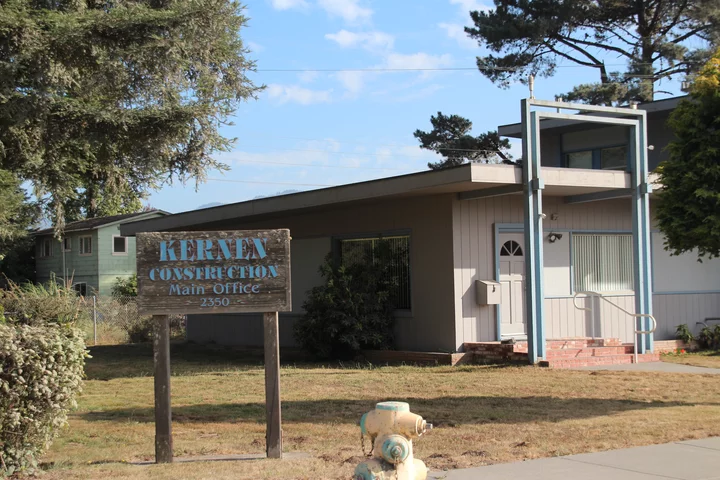
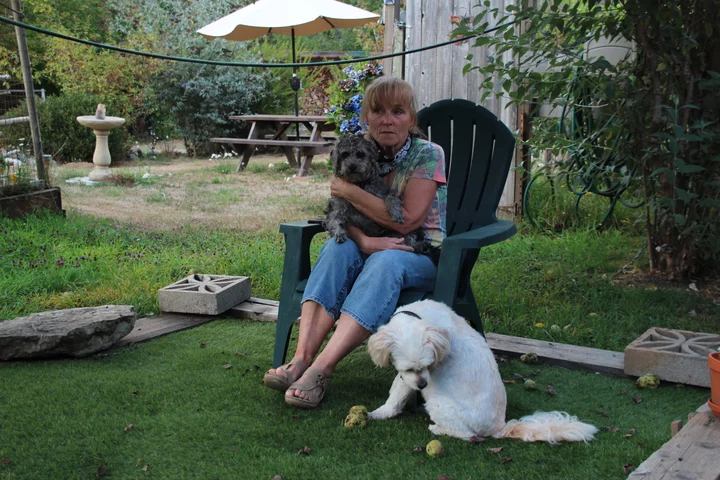

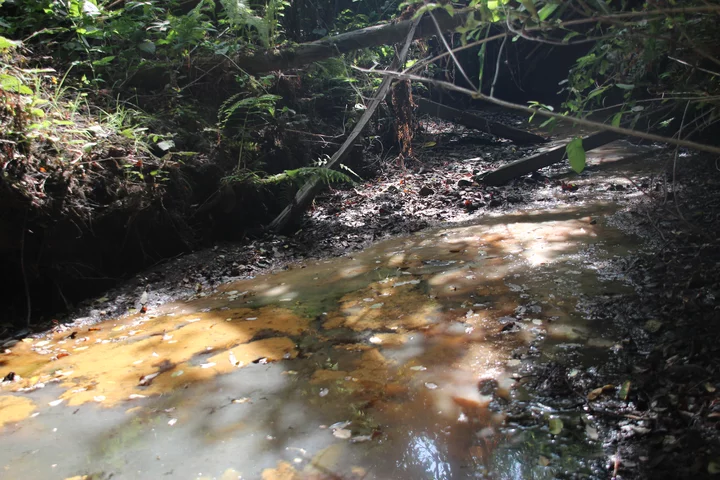
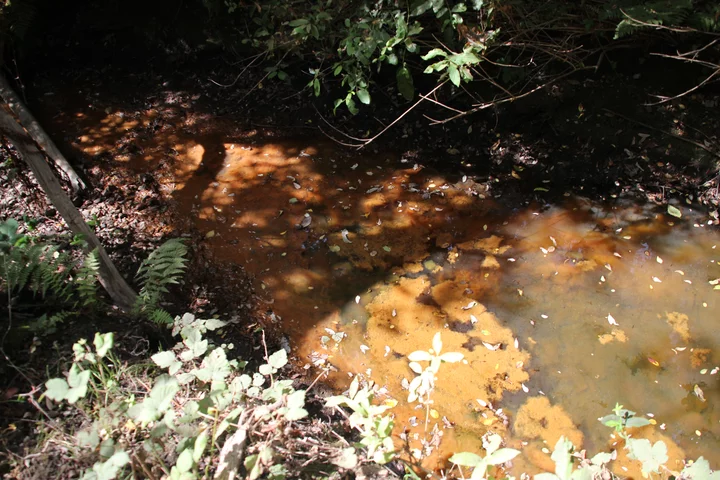
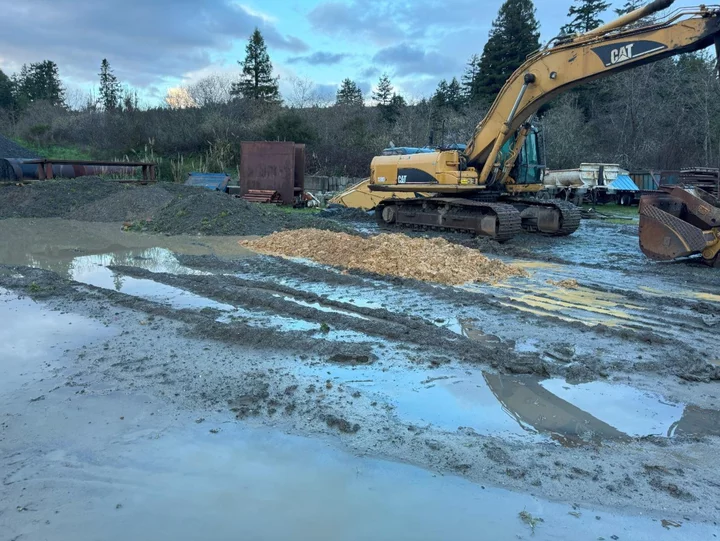

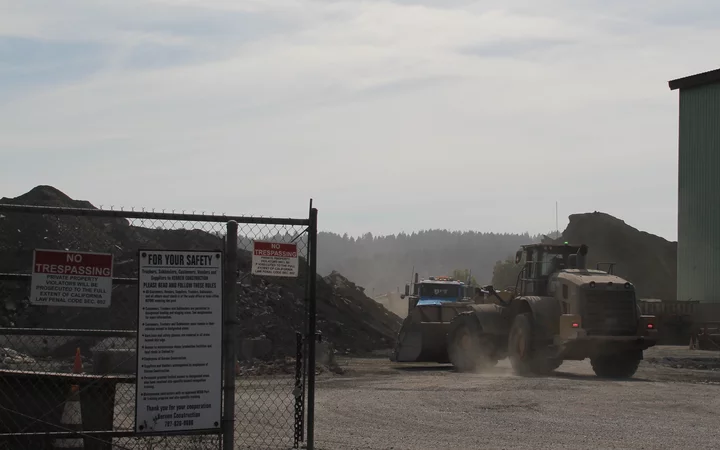

CLICK TO MANAGE